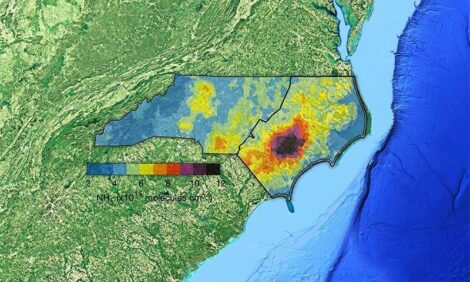



Considerations for the Large Group Housing of Pigs: Part 1
By the Prairie Swine Center - This is Part 1 of 4 of a special document outlining some considerations for the large groups housing of hogs.
Contents
- Executive Summary
- Introduction
- Objectives
- Facility Design & Operation
- Equipment
- Building Cost
- Labour / Skills
- Operating Costs
- Performance & Productivity
- Health
- Animal Welfare
- Pork Quality / Food Safety
- Economics
- Conclusion
Appendix
Figure 1 Large Pen Continuous Sort Design
Figure 2 500 Head Continuous Sort or Event Sort Design
Figure 3 1000 Head Continuous Sort
Economics Summary
Acknowledgements
Executive Summary
Composition of the VIDO Swine Technical Group
The VIDO Swine Technical Group is a unique association of people directly involved in the swine industry who voluntarily give their time and expertise in a wide variety of specialty disciplines. The members of the group change from time to time, and have included hog producers, veterinarians, agricultural economists, agricultural engineers, nutritionists, farm extension workers and VIDO research scientists.
Goals
The objective of the Swine Technical Group is to investigate and discuss some of the production challenges which relate to management and affect the profitability of hog production. These discussions have led to targeted research projects and development of a variety of education materials for swine producers.
Project
Many questions have been asked about facility design and management of grower/finisher hogs in large groups. This document provides a practical evaluation of the raising of finisher hogs in large groups and encourages further evaluation of the appropriateness of this housing and management strategy for swine production.
Finishing pigs in large groups provides good results in the many weight categories of production. By using a one-way gate and a weigh scale, the pigs will sort themselves daily into categories that are programmed into the scale. A good facility design with good equipment will:
- Reduce labour associated with weighing pigs
- Increase the number of pigs marketed in the ideal weight range
- Reduce overall production/operating costs
- Enhance animal welfare
This document focuses on the parameters of 250 pigs per group on fully slatted floors, with weighing and sorting utilizing an automatic sorting system. Capital cost considerations of facility design and operation, equipment and building cost are considered. Operating costs and labour/skills are reviewed.
I. Introduction
Large group housing of grower/finisher pigs has had a tremendous growth in popularity in recent years due primarily to increases in herd size, available automation in sorting and positive producer experiences with increasing the size of groups. Many questions have been asked about facility design and management of grower/finisher hogs in large groups.
This publication was designed by pork producers, veterinarians, research scientists, extension personnel, and industry suppliers, to provide a one-stop source of the current information available on the subject and an evaluation of current knowledge. Our goal was to develop a checklist approach that pork producers and their advisors could use when evaluating the potential for large group housing on their farm. The document poses the questions any operator should ask before investing in LGH, and where available provides answers and the combined experience of the group.
LGH is still in its infancy, representing only a small but rapidly growing percentage of the finishing hog housing in Canada. As such, our knowledge, gleaned from controlled research studies and pork producer experience, is evolving. This document is designed to evolve with the industry, providing regular updates as the information becomes available. The on-line nature of the document allows for easy updating. For the most recent version, please check the producer’s section of the VIDO website: www.vido.org.
II Objectives of Large Group Housing (LGH):
This document is intended to increase awareness with regard to the questions that must be answered when considering construction and operation of large group housing (LGH). It will focus on the following parameters:
- Group size of 250 or more pigs
- Weighing and sorting utilizing an auto sorter system
- Floors that are fully slatted*
- Reduce labour associated with weighing/handling pigs
- Increase the number of pigs marketed in the ideal weight range
- Reduce overall production/operating costs
- Enhance animal welfare
* Fully Slatted Floors versus Partially Slatted Floors
We fully recognize that producers will consider converting existing partially slatted floor barns to large group housing. Many of the points in this paper can be applied to partially slatted floors. In our final draft we decided that we should maintain the focus on a fully slatted floor system, the most typical system used in Canada for LGH. It was also felt that, except for challenges with dunging patterns, most aspects of fully and partially slatted floors would apply to large group housing.
III Facility Design and Operation
Positives:
Pigs will have a greater opportunity to choose an appropriate comfort zone within the larger pen layout.
Pigs are able to avoid aggressive pigs.
There is better observation because of less penning and more room to move pigs within the pen.
It is easier for the herdsperson to move around pens checking pigs and equipment.
The design forces more intimate observation of pigs, feeders and waterers since the operator must physically enter the pen.
Size of groups is flexible Specialized handling and weighing areas/rooms within the barn are not required for sorting at market time.
Construction of barn is easier due to less penning being installed.
Initial building cost is lower than conventional pen barn.
Less maintenance because of less equipment and fewer places catching dung.
Ease of managing equipment (for example, feeders can all be located in one area known as the food court; this avoids the need for climbing over pen dividers to check feeders in multiple pens).
Pig management improves because decisions can be based on real pig weight data as collected by the autosorter.
Air speed may need to be reduced in order to minimize the movement of air under the slats. There is a concern this may increase gas and odour levels in the room, compared to rooms with solid pen dividers used for small groups which buffer air speeds at slat level.
Partially slatted floors are not recommended at this time because of the uncertainty of control of dunging patterns.
Renovation of any room is difficult; dunging patterns are often hard to control and variable.
Differentiation of the pen into eating, dunging and sleeping areas results in uneven distribution of urine and spilled water, possibly resulting in pits not flushing properly and build-up of solids or production of higher ammonia levels.
Discussion - Facility Design
If differentiation of eating, dunging and lying areas has caused uneven distribution of urine and spilled drinking water, you may need to add water to specific areas to improve flow in flush gutter. Fully slatted floors can lead to an increase in ammonia over partially slatted floors since there is greater area for evaporation. Alternative slot arrangements could be used to supply some increased solid floor for improved pig comfort. Some research is needed to define ventilation opportunities that can be captured with large group housing. There may be opportunities to create some very specific climate zones within the large group pens. These specific zones can better meet the variation of temperature needs within the population.
The equation 0.034XBW.66 = m2 (for full slats) for calculating predicted floor space works well regardless of group size for pigs on fully slatted floors where BW (kg) is the market body weight of the pig. The conversion factor is 10.73 to adjust from square meters to square feet. (Source: Dr. Harold Gonyou, Prairie Swine Centre).
The art is to design a load-out area that is flexible for a variable number of pigs.
If using a feeding area or food court design, the experience of the group is to provide 2.5 sq. ft/pig in this area. This area is designed to be intentionally small so as not to encourage pigs to lie and sleep in the area. (Source: Dr. Gary Parker, University of Kentucky - recommends 25-30% of floor space for feeding)
Further information
To read Part 2 please click here
To read Part 3 please click here
Source - Prairie Swine Centre - July 2004







